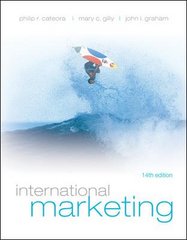Question
Assume that a small town uses a referendum to overcome the free-ridership problem and determine how its residents might value a new water filtration system
Assume that a small town uses a referendum to overcome the free-ridership problem and determine
how its residents might value a new water filtration system for its public water supply. The voting results
are aggregated by the town's two districts, yielding the following demand estimates:
District 1:
Q
= 160
20
P
1
District 2:
Q
= 60
5
P
2
where Q is the expected percent of copper to be filtered by the system and P is the price in millions of
dollars.
a) Based on these estimates, determine the town's market demand for this public good, the new filtration
system. Provide a graphical and algebraic answer.
b) If the market supply for the system were P = 6 + 0.15 Q, what would be the equilibrium price and
quantity for the town? Provide a graphical and algebraic answer.
c) Calculate total welfare from the provision of the public good.
Step by Step Solution
There are 3 Steps involved in it
Step: 1

Get Instant Access to Expert-Tailored Solutions
See step-by-step solutions with expert insights and AI powered tools for academic success
Step: 2

Step: 3

Ace Your Homework with AI
Get the answers you need in no time with our AI-driven, step-by-step assistance
Get Started


